The 2019 European Union report on pesticide residues in food
- PMID: 33854575
- PMCID: PMC8025100
- DOI: 10.2903/j.efsa.2021.6491
The 2019 European Union report on pesticide residues in food
Abstract
Under European Union legislation (Article 32, Regulation (EC) No 396/2005), the EFSA provides an annual report which examines pesticide residue levels in foods on the European market. This report is based on data from the official national control activities carried out by EU Member States, Iceland and Norway and includes a subset of data from the EU-coordinated control programme which uses a randomised sampling strategy. For 2019, 96.1% of the overall 96,302 samples analysed fell below the maximum residue level (MRL), 3.9% exceeded this level, of which 2.3% were non-compliant, i.e. samples exceeding the MRL after taking the measurement uncertainty into account. For the subset of 12,579 samples analysed as part of the EU-coordinated control programme, 2.0% exceeded the MRL and 1.0% were non-compliant. To assess acute and chronic risk to consumer health, dietary exposure to pesticide residues was estimated and compared with health-based guidance values. The findings suggest that the residue levels for the food commodities analysed are unlikely to pose any concern for consumer health. However, a number of recommendations are proposed to increase the effectiveness of European control systems, thereby continuing to ensure a high level of consumer protection throughout the EU.
Keywords: European Union; acute; chronic; dietary exposure; food safety; maximum residue levels; national monitoring programme; pesticide residues; risk assessment.
© 2021 European Food Safety Authority. EFSA Journal published by John Wiley and Sons Ltd on behalf of European Food Safety Authority.
Figures







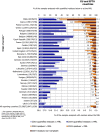
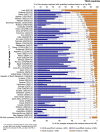
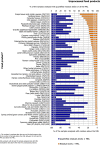

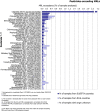










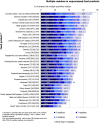

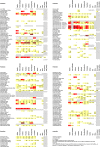
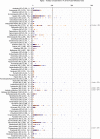

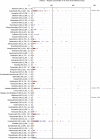

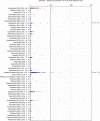
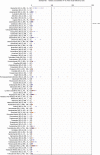
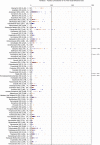
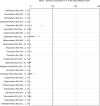



Similar articles
-
The 2018 European Union report on pesticide residues in food.EFSA J. 2020 Apr 2;18(4):e06057. doi: 10.2903/j.efsa.2020.6057. eCollection 2020 Apr. EFSA J. 2020. PMID: 32874271 Free PMC article.
-
The 2020 European Union report on pesticide residues in food.EFSA J. 2022 Mar 30;20(3):e07215. doi: 10.2903/j.efsa.2022.7215. eCollection 2022 Mar. EFSA J. 2022. PMID: 35386573 Free PMC article.
-
The 2021 European Union report on pesticide residues in food.EFSA J. 2023 Apr 26;21(4):e07939. doi: 10.2903/j.efsa.2023.7939. eCollection 2023 Apr. EFSA J. 2023. PMID: 37122284 Free PMC article.
-
[Consumer risk assessment in case of maximum residue levels (MRLs) violations in food].Rocz Panstw Zakl Hig. 2007;58(2):377-88. Rocz Panstw Zakl Hig. 2007. PMID: 17929585 Review. Polish.
-
Pesticide residues in products of plant origin in the European Union. Sampling strategy and results from the co-ordinated EU monitoring programmes in 1996 and 1997.Environ Sci Pollut Res Int. 2001;8(2):109-12. doi: 10.1007/BF02987303. Environ Sci Pollut Res Int. 2001. PMID: 11400636 Review.
Cited by
-
Non-target estrogenic screening of 60 pesticides, six plant protection products, and tomato, grape, and wine samples by planar chromatography combined with the planar yeast estrogen screen bioassay.Anal Bioanal Chem. 2024 Jan;416(3):701-713. doi: 10.1007/s00216-023-04605-x. Epub 2023 Mar 6. Anal Bioanal Chem. 2024. PMID: 36877263 Free PMC article.
-
Glyphosate as a Food Contaminant: Main Sources, Detection Levels, and Implications for Human and Public Health.Foods. 2024 May 28;13(11):1697. doi: 10.3390/foods13111697. Foods. 2024. PMID: 38890925 Free PMC article.
-
Evaluating sulfoxaflor residues in pig tissues using animal modeling.J Anim Sci Technol. 2022 Sep;64(5):911-921. doi: 10.5187/jast.2022.e67. Epub 2022 Sep 30. J Anim Sci Technol. 2022. PMID: 36287781 Free PMC article.
-
Environmental pressures and pesticide exposure associated with an increase in the share of plant-based foods in the diet.Sci Rep. 2023 Nov 7;13(1):19317. doi: 10.1038/s41598-023-46032-z. Sci Rep. 2023. PMID: 37935749 Free PMC article.
-
Residues of Pesticides and Heavy Metals in Polish Varietal Honey.Foods. 2022 Aug 6;11(15):2362. doi: 10.3390/foods11152362. Foods. 2022. PMID: 35954127 Free PMC article.
References
-
- Codex (Codex Alimentarius Commission), 2006. CAG/GL 59‐2006 Guidelines on Estimation of Uncertainty of Results. Codex Alimentarius Commission, Rome Italy, 2006. Available online: www.codexalimentarius.net/download/report/701/al31_24e.pdf
-
- EFSA (European Food Safety Authority), 2011. Review of the existing maximum residue levels (MRLs) for tebuconazole according to Article 12 of Regulation (EC) No 396/2005. EFSA Journal 2011;9(8):2339, 96 pp. 10.2903/j.efsa.2011.2339 - DOI
-
- EFSA (European Food Safety Authority), 2015b. Reasoned opinion on the review of the existing maximum residue levels for deltamethrin according to Article 12 of Regulation (EC) No 396/2005. EFSA Journal 2015;13(11):4309, 104 pp. 10.2903/j.efsa.2015.4309 - DOI
-
- EFSA (European Food Safety Authority), 2015c. Reasoned opinion on the revision of the review of the existing maximum residue levels for lambda‐cyhalothrin. EFSA Journal 2015;13(12):4324, 119 pp. 10.2903/j.efsa.2015.4324 - DOI
LinkOut - more resources
Full Text Sources
Other Literature Sources
